Art Movement Essay Examples & Topics
In your art history class, you will most definitely have to write art movement essays. These are papers about artists, artworks, as well as art movements, and periods. The difference between the last two can be very subtle. Art periods are more about the time when it happens. Art movements are about the intent or a shared goal. While historians define the former, the latter is formed by artists.
The significance of art movements to an artist is hard to overestimate. Individuals get inspired by different trends and incorporate various characteristics into their works.
Artists group an art movement with a set goal, particular style, and common agenda. They create publications and manifestos that declare their values and principles. They share their dreams of what their craft should be. In a way, it is a critique of what art currently is or was.
In your art movement essay, you might want to concentrate on the importance or characteristics of a certain movement. Depending on your assignment, you’ll probably choose realism, minimalism, postmodernism, feminism movement, or something else. Another option is to share your impressions you got from a certain piece of art in a reflection paper.
Whether you are assigned to write a paper on ancient or modern art, our article will be helpful. In it, our experts have gathered everything necessary to write an essay on art movements. Below you’ll find a list of art style examples. You can analyze any of them in your assignment. Besides, you will learn the concepts and terminology that are significant to art movements and see art movements essay examples below. Write an A+ essay about arts with us!

Art Periods & Art Style Examples
As we’ve already mentioned, art periods are defined by historians retrospectively. We’ve gathered information about them in this section. Any of the periods can become a foundation for your art movements essay. As for the idea to write about, you can let our topic generator create one for you.
Here’s how the evolution of art looks like from a linear historical perspective:
- Ancient Period (before 800BC)
Everything that is dated before 800 BC and before the rise of Greece is considered ancient. Yet, the cultures of the time were entirely separated. That is why ancient art usually gets categorized geographically. Each culture has its look and character. Celtic, Egyptian, African, Asian, Mesopotamian, and Pre-Columbian art is included in the ancient period.
- Greek/Roman Period (800BC – 400AD)
This period in the Greek and Roman Empires focused on beauty and harmony. Most of the artworks centered around religion and human perfection. Among the prominent pieces of art are mosaics, vases, architecture, paintings, sculptures.
- Medieval Period (400s-1350s)
Medieval Art can be characterized by Christianity. Elaborate patterns and the use of metals and gems are its prevalent features. Art historians can break the period into several smaller ones:
- Early Christian,
- Romanesque,
- Renaissance Period (1350s-1600s)
During this period, artists used linear perspective and Classical ideals to depict nature and beauty. Faith in the nobility of man underpinned paintings, literature, and theater. Naturally, the Renaissance period contains several art movements.
- Baroque Period (17th century)
Baroque art in Western tradition coincides with the 17th century. It tried to represent infinity and had an emphasis on light and effects. It was apparent through architecture in particular. The rococo style emerged in the late Baroque period and was characterized by exaggerated ornaments and details.
- Neoclassicism (17th century until the 1850s)
The neoclassical period in painting and visual arts began in the 17th century and lasted until the 1840s and 1850s. Artworks were based on simplicity, precision, and symmetry. In some countries, such as France, it is characterized by austere classical settings and artificial light. It is also can be seen as a return to Greek and Roman ideas of logic.
- Romanticism (first half of the 19th century)
It’s a period when artists honored nature, emotion, and individualism. Romantic art focused on spirituality, mystery, imagination. In painting, the brushwork was less precise. It was very often depicting landscape, peaceful beauty, church, and revolution.
- Realism (19th century)
Realism emerged in France around the time of the Revolution. Realists rejected Romanticism and wanted to depict life as it is. The paintings are drawn photographically, and even unpleasant aspects of everyday life are represented.
- Modern Period (1860s-1970s)
During the period, new artists experimented with the traditions of the past. Modern art begins with Vincent van Gogh, Paul Gauguin, Georges Seurat, and Pablo Picasso. Numerous movements emerged during this time.
Modern Art Movement Essay: What Is It about?
What is called modern art involves dozens of art movements as this period lasted for over a century. These are so different and versatile that students almost always pick one of them for their works. In this section, you’ll see critical modern art movements that you can discuss. To argue your position and elaborate on the topic properly, check how to write a 5-paragraph essay .
The key modern art movements are as follows:
- Impressionism (the 1870s, 1880s) is an art movement characterized by small but visible brush strokes in painting with light. This motion is a crucial element of the drawings. The group originated in Paris, and the name derives from Claude Monet’s painting Impression .
- Post-Impressionism (1886 and 1905) emerged as a reaction against Impressionists in France. It attacked the naturalistic depiction of light. Post-Impressionists use vivid colors and thick paint strokes. This movement was created by Paul Cezanne, Paul Gauguin, Vincent van Gogh.
- Art Nouveau ( around 1890 and 1910) is a style of art, applied art, and architecture that flourished in Europe and the US. The artists tried to create an entirely new style that will be free from any imitation. One of the most prominent representatives was Scottish architect Charles Rennie Mackintosh.
- Fauvism (around 1905) was started in Paris by the critic Louis Vauxcelles when he saw Andre Derain and Henri Matisse. The artists emphasized color over realistic representations. The subject matter used abstraction and oversimplification.
- Cubism (around 1907) is an avant-garde art movement that changed European painting and sculpture. It revolutionized music, performing arts, literature, and architecture. In Cubism, the artworks are broken up and reassembled. The artist depicts the object from a multitude of viewpoints.
- Futurism (around 1909) was launched in Italy by Filippo Marinetti when he published his Founding and Manifesto of Futurism . It was trendy in Italy and Russia. The Futurists produced paintings, ceramics, graphic and urban design. Besides, they impacted theatre, music, literature, and fashion.
- Expressionism (the start of the 20th century) is a movement that originated in Germany. Expressionists represented the world from a subject point of view to invoke emotions and ideas.
- Dadaism (from 1916 to roughly 1924) is a movement of the European avant-garde in the 20th century. It was developed due to World War I and rejected logic, reason, and capitalist society. Instead, it focused on nonsense and irrationality. Dadaists created artworks in visual, literary, poetry, painting, and sculpture.
- Surrealism (from the late 1910s and early ‘20s) appeared in Europe after World War I. The trend is most known for visual works and writings. Artists created illogical works with photographic precision to allow the unconscious to manifest itself. Andre Breton, the leader of the art movement, expressed the aim of creating super-reality or surreality.
- Pop Art (the mid-1950s) was established in Britain and the US. It was a response to the optimism during the post-war consumer boom. Artists drew inspiration from popular cultures and new trends in arts such as comics, ads, and television. Andy Warhol, an American artist, and film director, was the leading figure in this movement.
- Feminist Art (the 1960s) emerged to provide female representation in art and the world. Feminist artists try to represent feminine experiences highlighting vaginal imagery and naked female body.
Thank you so much for reading our article till the end! Much more can be said and added about art movements and periods. Yet, we hope the information was enough for you to start working on your paper. Read the essays on art movements below to draw inspiration and ideas.
192 Art Movements Essay Examples
Contemporary art practices essay.
- Words: 2962
Positive Impact of Islamic Art on Society
Should the government fund the arts.
- Words: 1149
Impressionism in Music and Art
- Words: 2018
Liberal Arts Education and Value Breadth Areas
The renaissance time during romeo and juliet, formal analysis: empress theodora and her attendants, impact of art on society.
- Words: 1779
The Challenges Emerging Artists Are Facing in Emerging Art Scenes
- Words: 2833
Renaissance and Realism Art Periods
- Words: 1431
Religious Influence on Art and Architecture
La grande odalisque by ingres analysis.
- Words: 1112
Filippo Marinetti’s Futurist Manifesto
The difference between art deco and depression modern design, baroque and rococo: imagination, values, emotions.
- Words: 1421
Post Modern Art
- Words: 1145
Differences of Realism, Naturalism, and Modernism Periods in Art
Renaissance versus baroque.
- Words: 1315
Art During the Renaissance
- Words: 1282
American Pop Art Culture Review
- Words: 1661
Abstract Expressionism: Jackson Pollock and Mark Rothko
Islamic art in africa.
- Words: 2286
Romanticism Period in Art
- Words: 2297
Islamic Art: Early Medieval Period
- Words: 1377
Aesthetic Movement Form and Content
- Words: 1401
Abstract Expressionism and Minimalism
The concept of renaissance humanism in botticelli’s ‘madonna and child with adoring angel’, theory of modern art: theory of realism.
- Words: 1866
Romanticism as an Ideological and Artistic Trend
Contemporary art as an example of social commentary, idea art, dadaism, and duchampism, de stijl art definition.
- Words: 2248
Modern Age: Deconstructivism vs. Modernism
- Words: 2522
Explaining Modernism: Evolving Beliefs and Ideas
- Words: 3067
Dutch Interior and Related Art Movement Issues
German expressionism and fauvism, impressionist art: history, technique and composition.
- Words: 1916
The Salsa: Music and Dance Review
- Words: 2664
An analysis of the Luncheon of the boating party
- Words: 1072
The Aesthetic Movement and Arts and Crafts Era
- Words: 1182
Aspects of the Renaissance in Florence
The 15th century italian renaissance, the difference between impressionism and expressionism, romanticism: beethoven’s pathétique and douglass’ the narrative, modernism and representation of its principles, socio-political relevance of artivism.
- Words: 2760
Dada Movement: Reading Synopsis
Renaissance and romanticism: concepts of beauty, traditional oceanian art and its influence on the western culture.
- Words: 1494
Modernism in Art: Themes and Techniques
Gothic revival, arts & crafts, and glasgow school.
- Words: 1529
Key Characteristics of the Rococo Style in Arts
The variety of art genres and famous painters.
- Words: 1241
The Beach Boys and The Beatles in the Psychedelic Movement
In dreams: surrealism and the human condition, women’s liberation movement in the arts, the harlem renaissance and american culture, social justice arts as a remedy for people, proto-renaissance and its most important examples, romanesque art period and its characteristics, the coming of modern era and the birth of “new art”.
- Words: 1079
Muthesius-Van de Velde: Werkbund Theses and Antithesis
Gheorghe virtosu and abstract art movement, art inspiration and production, women in ancient greek and roman art, what are the differences between art and design, the difference between the renaissance and the baroque, revivalism in england and germany.
- Words: 2111
A Journey From Neoclassicism to Modernism
- Words: 1720
Cubism and Design Aesthetic of Modernism
The british arts and crafts movement, the need for artistic traditions, definition of modernism and avant-garde movements, art and modernity. new movements.
- Words: 1117
Art Deco Tendencies in the Works of Frank Lloyd Wright
Cubism: revolution in art, the art movement of impressionism, intermedia issues: a discussion of the current trends.
- Words: 2779
Art Movements. Textiles in the Bauhaus
- Words: 2863
Expressionism: Bahr and Hal Foster’s Articles
Pop art and photorealism movements, the time hidden capsules during the renaissance and baroque periods.
- Words: 1099
Hensbergen’s “Guernica” Is a Paradigm of the Modern Art
The feminist art movement in the 1970s and today.
- Words: 2741
Installation Art Movement Overview
Examination of relativism and objectivism on western and eastern culture, dadaism as an artistic movement: elements, ideas, influence, the european baroque era.
- Words: 1201
European Baroque: Artists, Features, Ideas
Representatives creativity of the hudson river painters, the realism in art movement, the dada movement and dadaism, surrealism in the art and literature, how modernism evolved into postmodernism, daniel boorstin “the creators, a history of heroes of the imagination” overview and analysis, concept of creativity and gifted children.
- Words: 1437
Place of Art in the Period of Soviet Socialism
- Words: 1171
Race and Gender Representation in Art
- Words: 1316
Naturalistic Art Versus Abstract Art
Expressionism as a starting point in art changes.
- Words: 3817
Expressionism: A Shift in the Art Approaches
- Words: 1101
Architectural History and Theory: Modernity and Modernism
British romanticism and its origins, art planning and process.
- Words: 1041
Modern Art Directions Analysis
Art development periods and features, the significance of the arts and craft movement to subsequent schools of architecture and design.
- Words: 1314
Impressionist, Post-Impressionist, and Expressionist
The question of globalization, power and representation.
- Words: 3019
Classic & Modern Art Classifying and Appreciating
- Words: 2048
Kandinsky’s and Mondrian’s Abstraction Works
Dada and surrealism movement, mid-century modern design, neoclassicism and romanticism: comparison, the age of the baroque.
- Words: 1230
Mexican Muralists and African-American Modernists
- Words: 2204
Russian Avant-Garde in History of Modern Art
Cubism in history of modern art, fauvism: new forms in the new century, modern art in actions, events, performances.
Learning · By Artland Editors
The Most Famous Art Movements and Styles
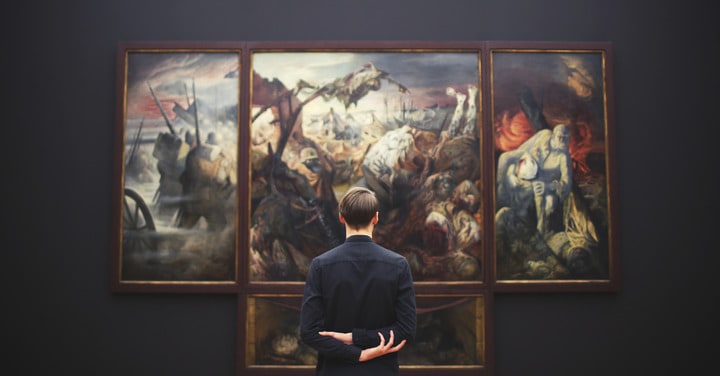
Throughout history, artists have produced art in a variety of media and styles following different philosophies and ideals. Although labelling may often result in being reductive, different artistic tendencies or styles can be grouped in collective titles known as art movements. If speaking art seems like a discipline in itself to you, here we provide you with the top terms of art movements and styles, from Classicism to Futurism, from Baroque to Avant-garde.
Essential Art Movements and Styles
- Abstract Expressionism
Art Nouveau
Avant-garde, color field painting.
- Conceptual Art
Constructivism
Dada / dadaism, digital art, expressionism, harlem renaissance, impressionism, installation art, neo-impressionism, neoclassicism, performance art, post-impressionism, precisionism, suprematism.
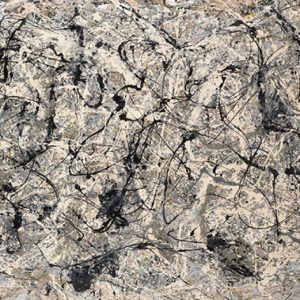
Abstract Expressionism
The designation ‘Abstract Expressionism’ encompasses a wide variety of American 20th-century art movements in abstract art. Also known as The New York School, this movement includes large painted canvases, sculptures and other media as well. The term ‘action painting’ is associated with Abstract Expressionism, describing a highly dynamic and spontaneous application of vigorous brushstrokes and the effects of dripping and spilling paint onto the canvas.
Read more about Abstract Expressionism .

Emerging in France before the First World War, Art Deco exploded in 1925 on the occasion of the Exposition des Arts Décoratifs (Exhibition of Decorative Arts). Blurring the line between different mediums and fields, from architecture and furniture to clothing and jewelry, Art Deco merged modern aesthetic with skillful craftsmanship, advanced technology, and elegant materials.
Read more about Art Deco .

A decorative style that flourished between 1890 and 1910 throughout Europe and the U.S. Art Nouveau, also called Jugendstil (Germany) and Sezessionstil (Austria), is characterized by sinuous, asymmetrical lines based on organic forms. Although it influenced painting and sculpture, its chief manifestations were in architecture and the decorative and graphic arts, aiming to create a new style, free of the imitative historicism that dominated much of 19th-century art movements and design.
Read more about Art Nouveau .
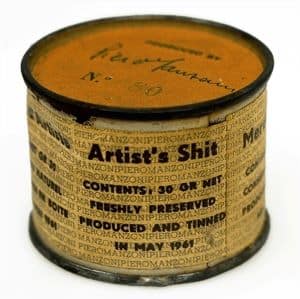
In French, avant-garde means “advanced guard” and refers to innovative or experimental concepts, works or the group or people producing them, particularly in the realms of culture, politics, and the arts.
Read more about Avant-garde .

The term Baroque, derived from the Portuguese ‘barocco’ meaning ‘irregular pearl or stone’, is a movement in art and architecture developed in Europe from the early seventeenth to mid-eighteenth century. Baroque emphasizes dramatic, exaggerated motion and clear, easily interpreted, detail, which is a far cry from Surrealism, to produce drama, tension, exuberance, and grandeur.
Read more about Baroque .
The school of art and design was founded in Germany by Walter Gropius in 1919 and shut down by the Nazis in 1933. The faculty brought together artists, architects, and designers, and developed an experimental pedagogy that focused on materials and functions rather than traditional art school methodologies. In its successive incarnations in Weimar, Dessau, and Berlin, it became the site of influential conversations about the role of modern art and design in society.
Read more about Bauhaus .
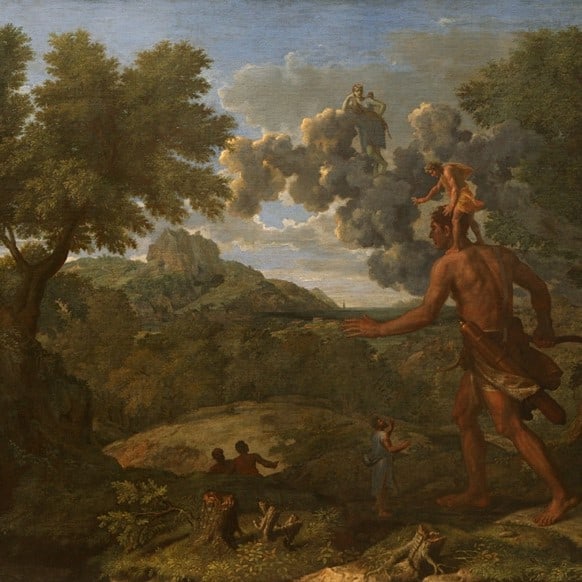
The principles embodied in the styles, theories, or philosophies of the different types of art from ancient Greece and Rome, concentrating on traditional forms with a focus on elegance and symmetry.
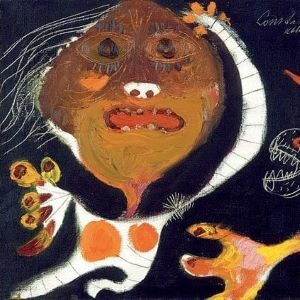
Founded in 1948 in Paris, CoBrA was a short-lived yet ground-breaking post-war group gathering international artists who advocated spontaneity as a means to create a new society. The name ‘CoBrA’ is an acronym for the home cities of its founders, respectively Copenhagen, Brussels and Amsterdam.
Read more about CoBrA .
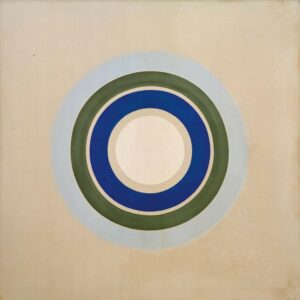
Often associated with Abstract Expressionism, the Colour Field painters were concerned with the use of pure abstraction but rejected the active gestures typical of Action Painting in favor of expressing the sublime through large and flat surfaces of contemplative colour and open compositions.
Read more about Color Field Painting .

Conceptual art
Conceptual art, sometimes simply called conceptualism, was one of several 20th-century art movements that arose during the 1960s, emphasizing ideas and theoretical practices rather than the creation of visual forms. The term was coined in 1967 by the artist Sol LeWitt, who gave the new genre its name in his essay “Paragraphs on Conceptual Art,” in which he wrote, “The idea itself, even if not made visual, is as much a work of art as any finished product.”
Read more about Conceptual Art .

Developed by the Russian avant-garde around 1915, constructivism is a branch of abstract art, rejecting the idea of “art for art’s sake” in favour of art as a practice directed towards social purposes. The movement’s work was mostly geometric and accurately composed, sometimes through mathematics and measuring tools.
Read more about Constructivism art .
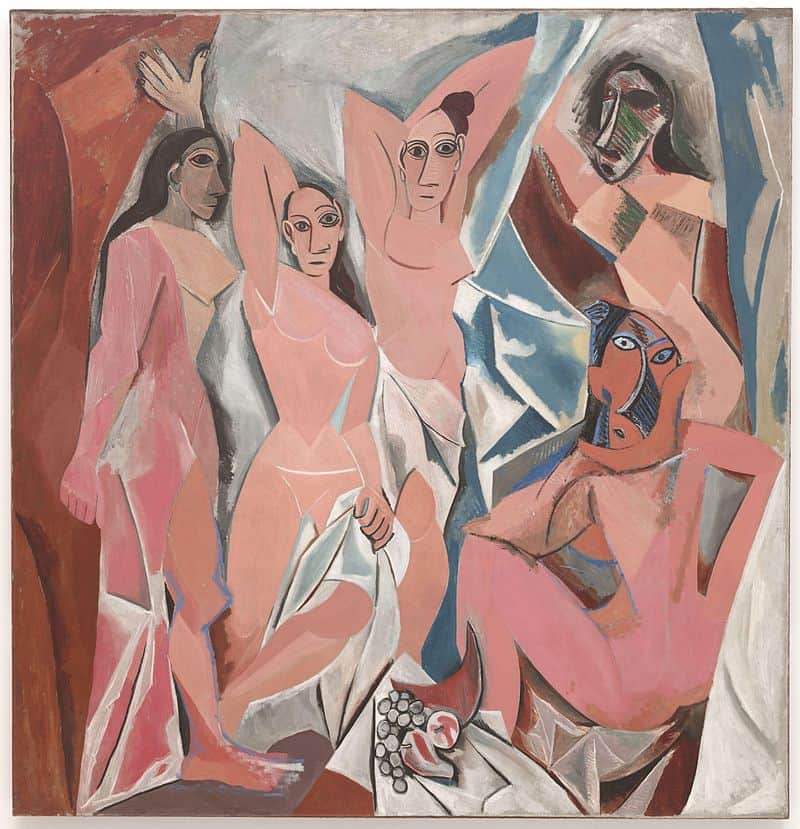
An artistic movement began in 1907 by artists Pablo Picasso and Georges Braque who developed a visual language whose geometric planes challenged the conventions of representation in different types of art, by reinventing traditional subjects such as nudes, landscapes, and still lifes as increasingly fragmented compositions.
Read more about Cubism .

An artistic and literary movement in art formed during the First World War as a negative response to the traditional social values and conventional artistic practices of the different types of art at the time. Dada artists represented a protest movement with an anti-establishment manifesto, sought to expose accepted and often repressive conventions of order and logic by shocking people into self-awareness.
Read more about Dadaism .

Digital Art broadly covers a variety of creative practices that employ different electronic technologies and result in a final product that is also digital. From computer graphics to virtual reality, from artificial Intelligence to NFT technology, the Digital Art spectrum is wide, innovative, and under the spotlight of the contemporary art market.
Read more about Digital Art .

Expressionism is an international artistic movement in art, architecture, literature, and performance that flourished between 1905 and 1920, especially in Germany and Austria, that sought to express the meaning of emotional experience rather than physical reality. Conventions of the expressionist style include distortion, exaggeration, fantasy, and vivid, jarring, violent, or dynamic application of color in order to express the artist’s inner feelings or ideas.
Read more about Expressionism .

Coined by the critic Louis Vauxcelles, Fauvism (French for “wild beasts”) is one of the early 20th-century art movements. Fauvism is associated especially with Henri Matisse and André Derain, whose works are characterized by strong, vibrant colour and bold brushstrokes over realistic or representational qualities.
Read more about Fauvism .

Fairly unique among different types of art movements, it is an Italian development in abstract art and literature, founded in 1909 by Filippo Tommaso Marinetti, aiming to capture the dynamism, speed and energy of the modern mechanical world.
Read more about Futurism .
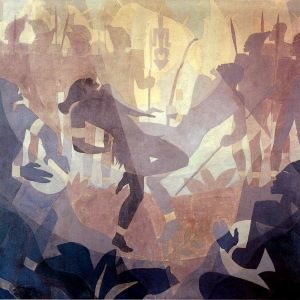
Emerged after the First World War in the predominantly African-American neighbourhood Harlem in New York, the Harlem Renaissance was an influential movement of African-American art spanning visual arts, literature, music, and theatre. The artists associated with the movement rejected stereotypical representations and expressed pride in black life and identity.
Read more about Harlem Renaissance .
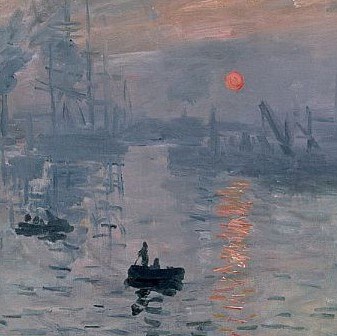
Impressionism is a 19th-century art movement, associated especially with French artists such as Claude Monet, Pierre Auguste Renoir, Camille Pissarro and Alfred Sisley, who attempted to accurately and objectively record visual ‘impressions’ by using small, thin, visible brushstrokes that coalesce to form a single scene and emphasize movement and the changing qualities of light.
Read more about Impressionism .

Installation art is a movement developed at the same time as pop art in the late 1950s, which is characterized by large-scale, mixed-media constructions, often designed for a specific place or for a temporary period of time. Often, installation art involves the creation of an enveloping aesthetic or sensory experience in a particular environment, often inviting active engagement or immersion by the spectator.
Read more about Installation Art .

Land art, also known as Earth art, Environmental art and Earthworks, is a simple art movement that emerged in the 1960s and 1970s, characterized by works made directly in the landscape, sculpting the land itself into earthworks or making structures in the landscape using natural materials such as rocks or twigs. It could be seen as a natural version of installation art. Land art is largely associated with Great Britain and the United States but includes examples from many countries.
Read more about Land Art .

Another one of the art movements from the 1960s, and typified by works composed of simple art, such as geometric shapes devoid of representational content. The minimal vocabulary of forms made from humble industrial materials challenged traditional notions of craftsmanship, the illusion of spatial depth in painting, and the idea that a work of abstract art must be one of a kind.
Read more about Minimalism .

A term applied to an avant-garde art movement that flourished principally in France from 1886 to 1906. Led by the example of Georges Seurat and Paul Signac, Neo-Impressionists renounced the spontaneity of Impressionism in favour of a measured and systematic painting technique known as pointillism, grounded in science and the study of optics.

Almost the opposite of pop art in terms of inspiration, this style is one that arose in the second half of the eighteenth century in Europe, drawing inspiration from the classical art and culture of Ancient Greece and Ancient Rome, which is not uncommon for art movements.
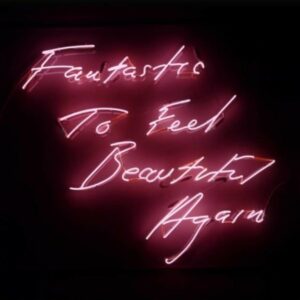
In the 1960s, Neon Art turned a commercial medium employed for advertising into an innovative artistic medium. Neon lighting allowed artists to explore the relationship between light, colour, and space while tapping into pop culture imagery and consumerism mechanisms.
Read more about Neon Art .
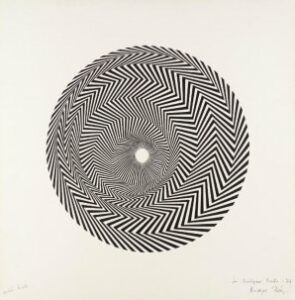
Op Art is an abbreviation of optical art, a form of geometric abstract art that explores optical sensations through the use of visual effects such as repetition of simple forms, vibrating colour-combinations, moiré patterns, foreground-background confusion, and an exaggerated sense of depth. Op Art paintings and works employ tricks of visual perception like manipulating rules of perspective to give the illusion of three-dimensional space.
Read more about Op Art .
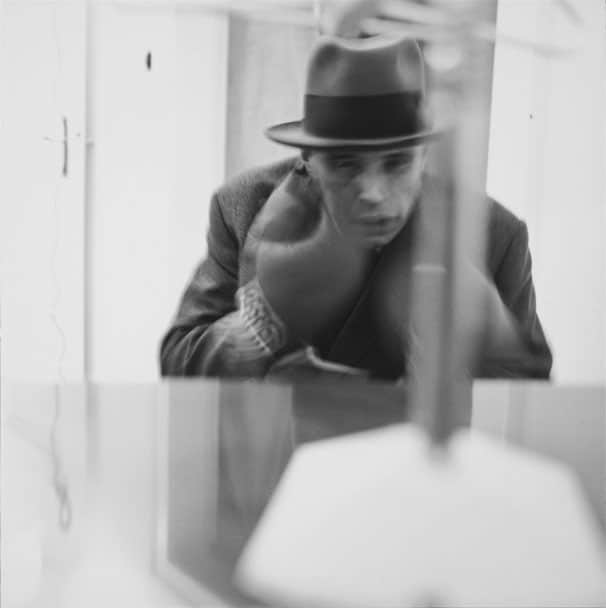
A term that emerged in the 1960s to describe different types of art that are created through actions performed by the artist or other participants, which may be live or recorded, spontaneous or scripted. Performance challenges the conventions of traditional forms of visual art such as painting and sculpture by embracing a variety of styles such as happenings, body art, actions, and events.
Read more about Performance Art .
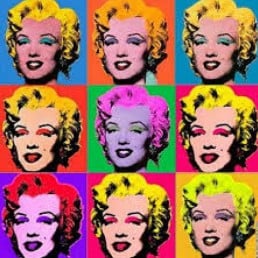
Pop Art emerged in the 1950s and was composed of British and American artists who draw inspiration from ‘popular’ imagery and products from commercial culture as opposed to ‘elitist’ fine art. Pop art reached its peak of activity in the 1960s, emphasizing the banal or kitschy elements of everyday life in such forms as mechanically reproduced silkscreens, large-scale facsimiles, and soft pop art sculptures.
Read more about Pop Art .

Coined in 1910, the term ‘Post-Impressionism’ describes the reaction against the Impressionists’ naturalistic depiction of light and colour. Artists like Paul Cézanne, Paul Gauguin, and Vincent van Gogh developed personal styles unified by their interest in expressing their emotional and psychological responses to the world through bold colours and often symbolic images.
Read more about Post-Impressionism .
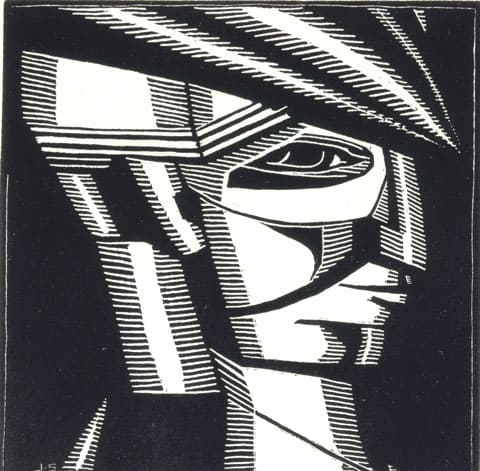
Precisionism was the first real indigenous modern art movement in the United States and contributed to the rise of American Modernism. Taking its cues from Cubism and Futurism , Precisionism was driven by a desire to bring structure back to art and celebrated the new American landscape of skyscrapers, bridges and factories.
Read more about Precisionism .

Rococo is a movement in art, particularly in architecture and decorative art, that originated in France in the early 1700s. Rococo art characteristics consist of elaborate ornamentation and a light, sensuous style, including scrollwork, foliage, and animal forms.

Evolving from early forms of graffiti, Street Art is a thought-provoking art movement that emerged in the 1960s and peaked with the spray-painted New York subway train murals of the 1980s. Street artists use urban spaces as their canvas, turning cities around the globe into open sky museums and have often found their way into the mainstream art world.
Read more about Street Art .

Founded by the poet André Breton in Paris in 1924, Surrealism was an artistic and literary movement that was active through World War II. The main goal of Surrealism painting and Surrealism artworks was to liberate thought, language, and human experience from the oppressive boundaries of rationalism by championing the irrational, the poetic and the revolutionary.
Read more about Surrealism .

Found to be a relatively unknown member of the different types of abstract art movements, outside of the art world that is. A term coined by Russian artist Kazimir Malevich in 1915 to describe an abstract style of painting that conforms to his belief that art expressed in the simplest geometric forms and dynamic compositions was superior to earlier forms of representational art, leading to the “supremacy of pure feeling or perception in the pictorial arts.”
Read more about Suprematism .
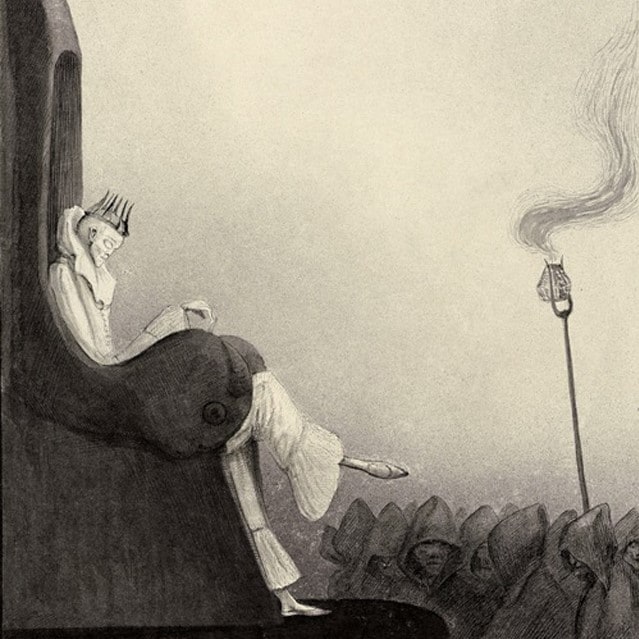
Symbolism emerged in the second half of the 19 th century, mainly in Catholic European countries where industrialisation had developed to a great degree. Starting as a literary movement, Symbolism was soon identified with a young generation of painters who wanted art to reflect emotions and ideas rather than to represent the natural world in an objective way, united by a shared pessimism and weariness of the decadence in modern society.
Read more about Symbolism .
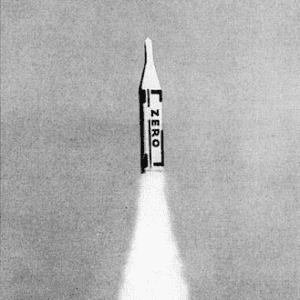
Emerged in Germany and spread to other countries in the 1950s, Zero Group was a group of artists united by the desire to move away from the subjectivity of post-war movements, focusing instead on the materiality, color, vibration, light, and movement of pure abstract art. The main protagonists of the group were Heinz Mack, Otto Piene, and Günther Uecker.
Read more about Zero Group .
Learn more art terminology with: MoMA – Glossary of Art Terms Tate – Art Terms
Home — Essay Samples — Arts & Culture — Art Movements
Essays on Art Movements
Italian villai medici: heroes or villains, why is the italian renaissance important, made-to-order essay as fast as you need it.
Each essay is customized to cater to your unique preferences
+ experts online
The Role of Patronage in Renaissance Art
Romanticism and the transcendental club, leonardo da vinci major accomplishments, takashi murakami's art analysis, let us write you an essay from scratch.
- 450+ experts on 30 subjects ready to help
- Custom essay delivered in as few as 3 hours
Roar Katy Perry Analysis
The renaissance: a cultural and intellectual revolution [dbq], birth of venus: analysis, analyzing lisa parker’s "snapping beans", get a personalized essay in under 3 hours.
Expert-written essays crafted with your exact needs in mind
The Influence of 19th-century Romanticism on Art and Culture
Prometheus: a symbol of rebellion and human progress, wolf hollow: summary of courage and morality, compare william wordsworth and daffodils, milky chance's "stolen dance": a musical analysis, vittoria mio core: musical analysis, hills like white elephants: modernism, michelangelo's influence on renaissance art, ugly love to hopeless: a critical analysis, topics in this category.
- Italian Renaissance
- Contemporary Art
- Orientalism
- Postmodernism
- Romantic Era
- Art Nouveau
- Impressionism
Popular Categories
- Visual Arts
- Famous Artists
- Performing Arts
- World Cultures

Get Your Personalized Essay in 3 Hours or Less!
We use cookies to personalyze your web-site experience. By continuing we’ll assume you board with our cookie policy .
- Instructions Followed To The Letter
- Deadlines Met At Every Stage
- Unique And Plagiarism Free
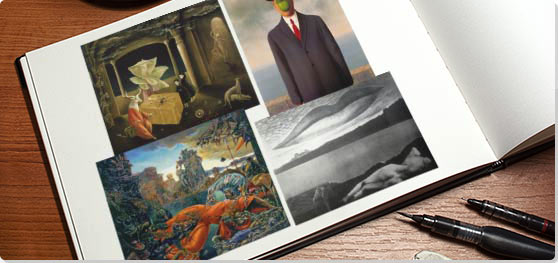
Summary of Surrealism
The Surrealists sought to channel the unconscious as a means to unlock the power of the imagination. Disdaining rationalism and literary realism, and powerfully influenced by psychoanalysis, the Surrealists believed the rational mind repressed the power of the imagination, weighing it down with taboos. Influenced also by Karl Marx , they hoped that the psyche had the power to reveal the contradictions in the everyday world and spur on revolution. Their emphasis on the power of personal imagination puts them in the tradition of Romanticism , but unlike their forebears, they believed that revelations could be found on the street and in everyday life. The Surrealist impulse to tap the unconscious mind, and their interests in myth and primitivism, went on to shape many later movements, and the style remains influential to this today.
Key Ideas & Accomplishments
- André Breton defined Surrealism as "psychic automatism in its pure state, by which one proposes to express - verbally, by means of the written word, or in any other manner - the actual functioning of thought." What Breton is proposing is that artists bypass reason and rationality by accessing their unconscious mind. In practice, these techniques became known as automatism or automatic writing, which allowed artists to forgo conscious thought and embrace chance when creating art.
- The work of Sigmund Freud was profoundly influential for Surrealists, particularly his book, The Interpretation of Dreams (1899). Freud legitimized the importance of dreams and the unconscious as valid revelations of human emotion and desires; his exposure of the complex and repressed inner worlds of sexuality, desire, and violence provided a theoretical basis for much of Surrealism.
- Surrealist imagery is probably the most recognizable element of the movement, yet it is also the most elusive to categorize and define. Each artist relied on their own recurring motifs arisen through their dreams or/and unconscious mind. At its basic, the imagery is outlandish, perplexing, and even uncanny, as it is meant to jolt the viewer out of their comforting assumptions. Nature, however, is the most frequent imagery: Max Ernst was obsessed with birds and had a bird alter ego, Salvador Dalí's works often include ants or eggs, and Joan Miró relied strongly on vague biomorphic imagery.
Key Artists

Overview of Surrealism
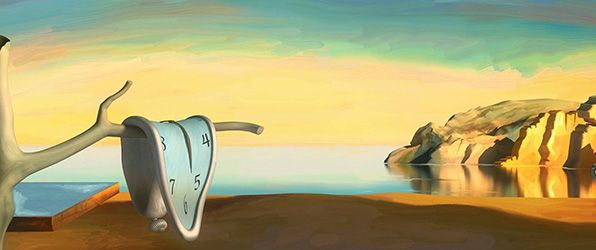
Building upon the anti-rationalism of Dada, the Surrealists made powerful art and offered a new direction for exploration, as Max Ernst said: "creativity is that marvelous capacity to grasp mutually distinct realities and draw a spark from their juxtaposition."
Artworks and Artists of Surrealism
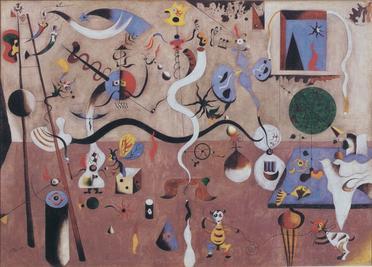
Carnival of Harlequin (1924-25)
Artist: Joan Miró
Miró created elaborate, fantastical spaces in his paintings that are an excellent example of Surrealism in their reliance on dream-like imagery and their use of biomorphism. Biomorphic shapes are those that resemble organic beings but that are hard to identify as any specific thing; the shapes seem to self-generate, morph, and dance on the canvas. While there is the suggestion of a believable three-dimensional space in Carnaval d'Arlequin , the playful shapes are arranged with an all-over quality that is common to many of Miró's works during his Surrealist period, and that would eventually lead him to further abstraction. Miró was especially known for his use of automatic writing techniques in the creation of his works, particularly doodling or automatic drawing, which is how he began many of his canvases. He is best known for his works such as this that depict chaotic yet lighthearted interior scenes, taking his influence from Dutch 17 th -century interiors.
Oil on canvas - Albright-Knox Art Gallery, Buffalo, New York
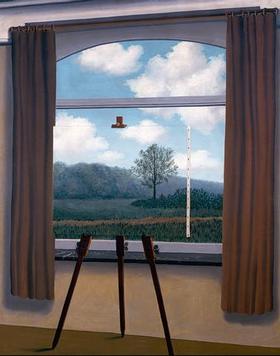

The Human Condition (1933)
Artist: René Magritte
The iconic and enigmatic René Magritte's works tend to be intellectual, often dealing with visual puns and the relation between the representation of something and the thing itself. In The Human Condition a canvas sits on an easel before a curtained window and reproduces exactly the scene outside the window that would be behind the canvas, thus the image on the easel in a sense becomes the scene, not just a reproduction of the landscape. There is in effect no difference between the two as both are fabrications of the artist. The hyperrealist painting style often used by Surrealists makes the odd setup seem dreamlike.
Oil on canvas - Los Angeles County Museum of Art
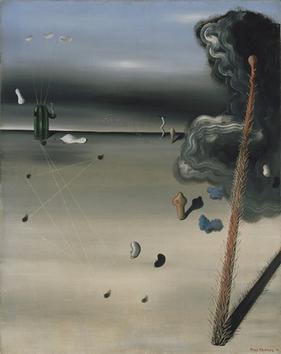
Mama, Papa is Wounded! (1927)
Artist: Yves Tanguy
The most pivotal moment for Tanguy in his decision to become a painter was his sighting of a canvas by Giorgio de Chirico in a shop window in 1923. The next year, Tanguy, the poet Jacques Prévert, and the actor and screenwriter Marcel Duhamel moved into a house that was to become a gathering place for the Surrealists, a movement he became interested in after reading the periodical La Révolution surréaliste . André Breton welcomed him into the group in 1925. Tanguy was inspired by the biomorphic forms of Jean Arp, Ernst, and Miró, quickly developing his own vocabulary of amoeba-like shapes that populate arid, mysterious settings, no doubt influenced by his youthful travels to Argentina, Brazil, and Tunisia. Despite his lack of formal training, Tanguy's mature style emerged by 1927, characterized by deserted landscapes littered with fantastical rocklike objects painted with a precise illusionism. The works usually have an overcast sky with a view thatseems to stretch endlessly. Mama, Papa is Wounded depicts Tanguy's most common subject matter of war. The work is painted in a hyperrealist style with his distinctive limited color palette, both of which create a sense of dream-like reality. Tanguy often found the titles of works while looking through psychiatric case histories for compelling statements by patients. Given that, it is difficult to know if this work is relevant to his own family history as he claimed to have imagined the painting in its entirety before he began it. His brother was killed in World War I and the bleakness of the landscape may refer generally to losses suffered in the war by thousands of French families. De Chirico's influence on Tanguy's work is obvious here in his use of falling shadows and a classical torso in the landscape.
Oil on Canvas - The Museum of Modern Art, New York

The Accommodations of Desire (1929)
Artist: Salvador Dalí
Painted in the summer of 1929 just after Dalí went to Paris for his first Surrealist exhibition, The Accommodations of Desire is a prime example of Dalí's ability to render his vivid and bizarre dreams with seemingly journalistic accuracy. He developed the paranoid-critical method, which involved systematic irrational thought and self-induced paranoia as a way to access his unconscious. He referred to the resulting works as "hand-painted dream photographs" because of their realism coupled with their eerie dream quality. The narrative of this work stems from Dalí's anxieties over his affair with Gala Eluard, wife of artist Paul Eluard. The lumpish white "pebbles" depict his insecurities about his future with Gala, circling around the concepts of terror and decay. While The Accommodations of Desire is an exposé of Dalí's deepest fears, it combines his typical hyper-realistic painting style with more experimental collage techniques. The lion heads are glued onto the canvas, and are believed to have been cut from a children's book.
Oil and cut-and-pasted printed paper on canvas - The Metropolitan Museum of Art, New York

The Palace at 4 a.m. (1932)
Artist: Alberto Giacometti
Giacometti was one of the few Surrealists who focused on sculpture. The Palace at 4 a.m. is a delicate construction that was inspired by his obsession with a lover named Denise the previous year. Of the affair he said, "a period of six months passed in the presence of a woman who, concentrating all life in herself, transported my every moment into a state of enchantment. We constructed a fantastical palace in the night - a very fragile palace of matches. At the least false movement a whole section would collapse. We always began it again." In 1933, he told Breton that he was incapable of making anything that did not have something to do with her. The work includes representations or symbols of his love interest as well as perhaps of his mother. Other imagery, such as the bird, is less easy to interpret. Thus, the work is characterized by its bizarre juxtaposition of objects and a title that is seemingly unrelated to the constructed scene, giving the piece an undercurrent of mystery and tension as if something frightening is about to occur. The work, in its child-like simplicity, captures the fragility of memory and desire. Giacometti's postwar interest in Existentialism is already evident here in how he represents the isolation of the various figures.
Wood, glass, wire, and string - The Museum of Modern Art, New York

Battle of Fishes (1926)
Artist: André Masson
Masson was one of the most enthusiastic followers of Breton's automatic writing, having begun his own independent experiments in the early 1920s. He would often produce art under exacting conditions, using drugs, going without sleep, or sustenance in order to relax conscious control of his art making so that he could access his unconscious. Masson, along with his neighbors Joan Miró, Antonin Artuad, and others would sometimes experiment together. He is best known for his use of sand. In an effort to introduce chance into his works, he would throw glue or gesso onto a canvas and then sand. His oil paintings were made based on the resulting shapes. Battle of the Fishes perhaps references his experiences in WWI. He signed up to fight and after three years, was seriously injured, taking months to recover in an army hospital and spending time in a psychiatric facility. He was unable for many years to speak of the things he witnessed as a soldier, but his art consistently depicts massacres, bizarre confrontations, rape, and dismemberment. Masson himself observed that male figures in his art rarely escape unharmed. Battle of Fishes has subdued color, but the fish seem involved in a vicious battle to the death with their razor-like teeth and spilled blood. Masson believed that the use of chance in art would reveal the sadism of all creatures - an idea that he could only reveal in his art.
Oil on canvas - The Museum of Modern Art, New York
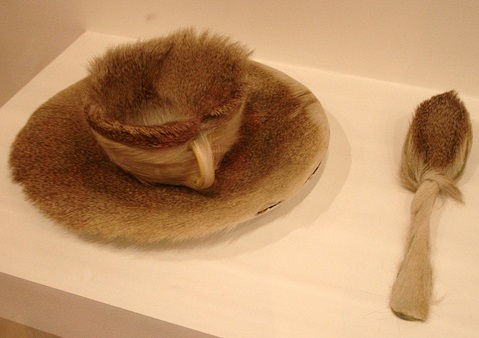
Object (1936)
Artist: Meret Oppenheim
Oppenheim was one of the few women Surrealists whose work was exhibited with the group. Like Giacometti she worked primarily with objects. This work, also known under the title Luncheon in Fur , with its unsettling juxtaposition of a domestic object and animality, is a quintessential example of Surrealist ideas. The artist makes strange a teacup, saucer, and spoon purchased at typical department store - objects that were familiar are made disturbingly off-putting as the viewer must imagine drinking tea from a fur-covered cup.
Fur-covered cup, saucer, and spoon - The Museum of Modern Art, New York

The Barbarians (1937)
Artist: Max Ernst
Max Ernst was known for his automatic writing techniques including frottage, grattage, and collage. Here he uses grattage, which requires taking a painted canvas, placing it on a textured surface, and scraping off paint. The method introduces elements of chance and unpredictability to the work as the artist is forced to release some control of the creative process. The grattaged canvas was then used by Ernst as inspiration for further imagery. The Barbarians is typically Surrealist as it is fraught with bizarre juxtapositions, mysterious figures, and dream-inspired symbols. The bird imagery is one of the staples of Ernst's work - he experienced a childhood trauma related to the death of his pet bird and as an adult developed a bird alter ego named Loplop.
Oil on wood with painted wood elements - The Museum of Modern Art, New York

Mannequin (1938)
Artist: Man Ray
Mannequin depicts André Masson's mannequin at the Exposition International du Surrealisme, Galerie des Beaux-Arts, in Paris 1938. Joan Miró, Salvador Dalí, Maurice Henry, and others also designed these weird mannequins to fill a room with uncanny female forms that looked both monstrous and sexually alluring. Man Ray photographed them all as discreet characters, of which this is one example. He repeatedly photographed his assistant, artist Lee Miller, and many other women, both living and inanimate. Like Hans Bellmer, an artist peripherally associated with the group, Ray was obsessed with the female form as the perfect embodiment of male desire, and sought to capture it formally in fantastical ways. Man Ray also pioneered many photographic techniques, including rayographs , named after himself, that incorporate elements of chance and in which subjects appear to glow in dream-like silver auras.
Assemblage of wood, oil, metal, board on board, with artist's frame - National Gallery of Australia

Birthday (1942)
Artist: Dorothea Tanning
Birthday is a self-portrait that Dorothea Tanning painted to commemorate her 30th birthday. Viewed up close, one notices the infinite rooms recessing into the background, symbolizing Tanning's unconscious mind. Many Surrealists felt architectural imagery was well-suited to expressing notions of a labyrinthine self that changes and expands over time; Birthday is one of the best examples of this. Also notable is the gargoyle at the subject's feet. Tanning said this was her rendition of a lemur, which has been associated with death spirits. Tanning juxtaposed natural imagery, like the skirt made of roots, against objects representing high culture, like fancy apparel and interior design, to pay homage to culture as well as to express nature and wilderness as a feminine construct.
Oil on canvas - The Philadelphia Museum of Art
Beginnings of Surrealism
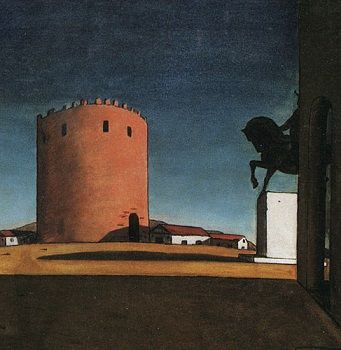
Surrealism grew out of the Dada movement, which was also in rebellion against middle-class complacency. Artistic influences, however, came from many different sources. The most immediate influence for several of the Surrealists was Giorgio de Chirico , their contemporary who, like them, used bizarre imagery with unsettling juxtapositions (and his Metaphysical Painting movement). They were also drawn to artists from the recent past who were interested in primitivism, the naive, or fantastical imagery, such as Gustave Moreau , Arnold Bocklin , Odilon Redon , and Henri Rousseau . Even artists from as far back as the Renaissance , such as Giuseppe Arcimboldo and Hieronymous Bosch , provided inspiration in so far as these artists were not overly concerned with aesthetic issues involving line and color, but instead felt compelled to create what Surrealists thought of as the "real."
The Surrealist movement began as a literary group strongly allied to Dada , emerging in the wake of the collapse of Dada in Paris, when André Breton's eagerness to bring purpose to Dada clashed with Tristan Tzara's anti-authoritarianism. Breton, who is occasionally described as the 'Pope' of Surrealism, officially founded the movement in 1924 when he wrote "The Surrealist Manifesto." However, the term "surrealism," was first coined in 1917 by Guillaume Apollinaire when he used it in program notes for the ballet Parade , written by Pablo Picasso , Leonide Massine, Jean Cocteau , and Erik Satie.
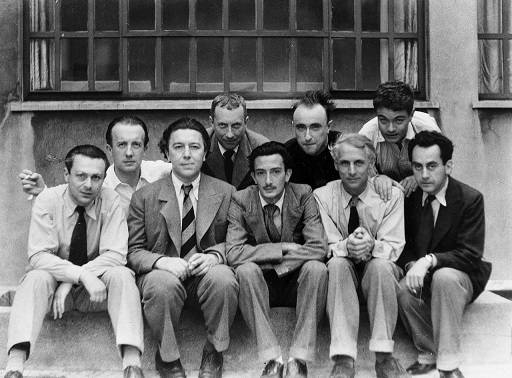
Around the same time that Breton published his inaugural manifesto, the group began publishing the journal La Révolution surréaliste , which was largely focused on writing, but also included art reproductions by artists such as de Chirico, Ernst, André Masson, and Man Ray. Publication continued until 1929.
The Bureau for Surrealist Research or Centrale Surréaliste was also established in Paris in 1924. This was a loosely affiliated group of writers and artists who met and conducted interviews to "gather all the information possible related to forms that might express the unconscious activity of the mind." Headed by Breton, the Bureau created a dual archive: one that collected dream imagery and one that collected material related to social life. At least two people manned the office each day - one to greet visitors and the other to write down the observations and comments of the visitors that then became part of the archive. In January of 1925, the Bureau officially published its revolutionary intent that was signed by 27 people, including Breton, Ernst, and Masson.
Surrealism: Concepts, Styles, and Trends
Surrealism shared much of the anti-rationalism of Dada, the movement out of which it grew. The original Parisian Surrealists used art as a reprieve from violent political situations and to address the unease they felt about the world's uncertainties. By employing fantasy and dream imagery, artists generated creative works in a variety of media that exposed their inner minds in eccentric, symbolic ways, uncovering anxieties and treating them analytically through visual means.
Surrealist Paintings
There were two styles or methods that distinguished Surrealist painting. Artists such as Salvador Dalí, Yves Tanguy, and René Magritte painted in a hyper-realistic style in which objects were depicted in crisp detail and with the illusion of three-dimensionality, emphasizing their dream-like quality. The color in these works was often either saturated (Dalí) or monochromatic (Tanguy), both choices conveying a dream state.
Several Surrealists also relied heavily on automatism or automatic writing as a way to tap into the unconscious mind. Artists such as Joan Miró and Max Ernst used various techniques to create unlikely and often outlandish imagery including collage , doodling, frottage, decalcomania, and grattage. Artists such as Hans Arp also created collages as stand-alone works.
Hyperrealism and automatism were not mutually exclusive. Miro, for example, often used both methods in one work. In either case, however the subject matter was arrived at or depicted, it was always bizarre - meant to disturb and baffle.
Surrealist Objects and Sculptures
Breton felt that the object had been in a state of crisis since the early-19 th century and thought this impasse could be overcome if the object in all its strangeness could be seen as if for the first time. The strategy was not to make Surreal objects for the sake of shocking the middle class a la Dada but to make objects "surreal" by what he called dépayesment or estrangement. The goal was the displacement of the object, removing it from its expected context, "defamilarizing" it. Once the object was removed from its normal circumstances, it could be seen without the mask of its cultural context. These incongruous combinations of objects were also thought to reveal the fraught sexual and psychological forces hidden beneath the surface of reality.
A limited number of Surrealists are known for their three-dimensional work. Arp, who began as part of the Dada movement, was known for his biomorphic objects. Oppenheim's pieces were bizarre combinations that removed familiar objects from their everyday context, while Giacometti's were more traditional sculptural forms, many of which were human-insect hybrid figures. Dalí, less known for his 3D work, did produce some interesting installations, particularly, Rainy Taxi (1938), which was an automobile with mannequins and a series of pipes that created "rain" in the car's interior.
Surrealist Photography
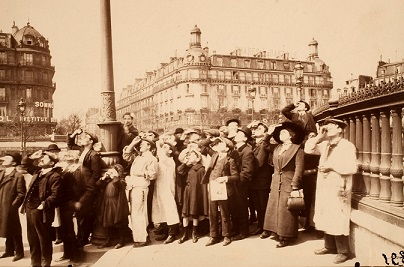
Photography, because of the ease with which it allowed artists to produce uncanny imagery, occupied a central role in Surrealism. Artists such as Man Ray and Maurice Tabard used the medium to explore automatic writing, using techniques such as double exposure, combination printing, montage, and solarization, the latter of which eschewed the camera altogether. Other photographers used rotation or distortion to render bizarre images.
The Surrealists also appreciated the prosaic photograph removed from its mundane context and seen through the lens of Surrealist sensibility. Vernacular snapshots, police photographs, movie stills, and documentary photographs all were published in Surrealist journals like La Révolution surréaliste and Minotaure , totally disconnected from their original purposes. The Surrealists, for example, were enthusiastic about Eugène Atget's photographs of Paris. Published in 1926 in La Révolution surréaliste at the prompting of his neighbor, Man Ray, Atget's imagery of a quickly vanishing Paris was understood as impulsive visions. Atget's photographs of empty streets and shop windows recalled the Surrealist's own vision of Paris as a "dream capital."
Surrealist Film
Surrealism was the first artistic movement to experiment with cinema in part because it offered more opportunity than theatre to create the bizarre or the unreal. The first film characterized as Surrealist was the 1924 Entr'acte , a 22-minute, silent film, written by Rene Clair and Francis Picabia , and directed by Clair. But, the most famous Surrealist filmmaker was of course Luis Buñuel . Working with Dalí, Buñuel made the classic films Un Chien Andalou (1929) and L'Age d'Or (1930), both of which were characterized by narrative disjunction and their peculiar, sometimes disturbing imagery. In the 1930s Joseph Cornell produced surrealist films in the United States, such as Rose Hobart (1936). Salvador Dalí designed a dream sequence for Alfred Hitchcock's Spellbound (1945).
The Rise and Decline of Surrealism
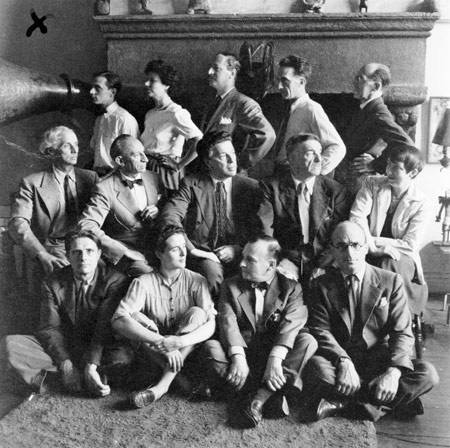
Though Surrealism originated in France, strains of it can be identified in art throughout the world. Particularly in the 1930s and 1940s, many artists were swept into its orbit as increasing political upheaval and a second global war encouraged fears that human civilization was in a state of crisis and collapse. The emigration of many Surrealists to the Americas during WWII spread their ideas further. Following the war, however, the group's ideas were challenged by the rise of Existentialism , which, while also celebrating individualism, was more rationally based than Surrealism. In the arts, the Abstract Expressionists incorporated Surrealist ideas and usurped their dominance by pioneering new techniques for representing the unconscious. Breton became increasingly interested in revolutionary political activism as the movement's primary goal. The result was the dispersal of the original movement into smaller factions of artists. The Bretonians, such as Roberto Matta , believed that art was inherently political. Others, like Yves Tanguy, Max Ernst, and Dorothea Tanning, remained in America to separate from Breton. Salvador Dalí, likewise, retreated to Spain, believing in the centrality of the individual in art.
Later Developments - After Surrealism
Abstract expressionism.
In 1936, the Museum of Modern Art in New York staged an exhibition entitled Fantastic Art, Dada, Surrealism , and many American artists were powerfully impressed by it. Some, such as Jackson Pollock , began to experiment with automatism, and with imagery that seemed to derive from the unconscious - experiments which would later lead to his "drip" paintings. Robert Motherwell , similarly, is said to have been "stuck between the two worlds" of abstraction and automatism.
Largely because of political upheaval in Europe, New York rather than Paris became the emergent center of a new vanguard, one that favored tapping the unconscious through abstraction as opposed to the "hand-painted dreams" of Salvador Dalí. Peggy Guggenheim's 1942 exhibition of Surrealist-influenced artists (Rothko, Gottlieb, Motherwell, Baziotes, Hoffman, Still, and Pollock) alongside European artists Miró, Klee, and Masson, underscores the speed with which Surrealist concepts spread through the New York art community.
Feminism and Women Surrealists
The Surrealists have often been depicted as a tightly knit group of men, and their art often envisioned women as wild "others" to the cultured, rational world. Work by feminist art historians has since corrected this impression, not only highlighting the number of women Surrealists who were active in the group, particularly in the 1930s, but also analyzing the gender stereotypes at work in much Surrealist art. Feminist art critics, such as Dawn Ades, Mary Ann Caws, and Whitney Chadwick, have devoted several books and exhibitions to this subject.
While most of the male Surrealists, especially Man Ray, Magritte, and Dalí, repeatedly focused on and/or distorted the female form and depicted women as muses, much in the way that male artists had for centuries, female Surrealists such as Claude Cahun , Lee Miller , Leonora Carrington , and Dorothea Tanning , sought to address the problematic adoption of Freudian psychoanalysis that often cast women as monstrous and lesser. Thus, many female Surrealists experimented with cross-dressing and depicted themselves as animals or mythic creatures.
British Surrealism
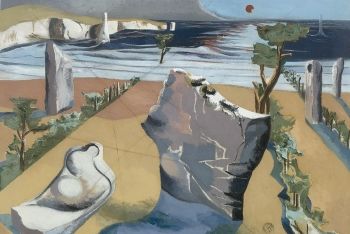
Interestingly, many notable female Surrealists were British. Examples include Eileen Agar , Ithell Colquhoun , Edith Rimmington , and Emmy Bridgwater . Particular to the British interpretation of Surrealist ideology was an ongoing exploration of human relations with their surrounding natural environment and most prominently, with the sea. Alongside Agar, Paul Nash developed an interest in the object trouvé , usually in the form of items collected from the beach. The focus on the border where land meets the sea, and where rocks anthropomorphically resemble people struck a cord with British identity and more generally, with Surrealist principles of reconciling and uniting opposites.
The International Surrealist Exhibition (1936) held in London was a particular catalyst for many British artists. Headed by Roland Penrose and Herbert Read, the movement thrived in Britain, creating the international icons Leonora Carrington and Lee Miller , and also spurring on the practice of another important circle of artists surrounding Ben Nicholson , Barbara Hepworth , and Henry Moore . Overall, the privileging of an eccentric imagination and essential rejection of standardized and rational modes of doing things resonated well from the outset. This golden period for art in general in the UK, and more specifically the legacies of British Surrealism continue to influence the country’s art practice today.
Useful Resources on Surrealism

- The Art Story Blog: Dalí and The Surrealists - Master Marketers Top 10 marketing stunts by Tristan Tzara, Andre Breton, and Salvador Dalí
- The Art Story Blog: Leonora Carrington’s Surrealist Scenes Find Muse in Hieronymus Bosch's Christian Fantasies Carrington borrow's her Surrealist ideas from the 16 th -century artist
- The Art Story Blog: Leonora Carrington in Pop Culture Madonna and W Magazine fashion shoots based on Carrington's visions
- Surrealism (2010) By Mary Ann Caws
- Surrealism: Desire Unbound (2005) By Jennifer Mundy, Dawn Ades, and Vincent Gille
- Surrealism: Themes and Movements (2004) Our Pick By Mary Ann Caws
- Surrealist Women : An International Anthology (1998) By Penelope Rosemont
- André Breton's Manifestos of Surrealism By André Breton, Richard Seaver, Helen R. Lane
- History of the Surrealist Movement Our Pick By Gerard Durozoi
- Nadja (1928) Our Pick By Andre Breton
- A Book of Surrealist Games (1995) By Alastair Brotchie and Mel Gooding
- Surrealism (Basic Art Series 2.0, 2015) By Cathrin Klingsöhr-Leroy
- The Surrealism Reader: An Anthology of Ideas (2016) By Dawn Ades, Michael Richardson, and Krzysztof Fijalkowski
- Leonora Carrington Rewrote the Surrealist Narrative for Women By Anwen Crawford / The New Yorker / May 2017
- Dalí in a diving helmet: How the Spaniard almost suffocated bringing Surrealism to Britain Our Pick By Joanna Moorhead / The Guardian / June 2016
- From Dada to Surrealism - Review Our Pick By Phillippe Dagen / The Guardian / July 19, 2011
- Surrealist America By Lewis Kachur / Artnet Magazine / July 21, 2005
- ART REVIEW; In Old Age, Surrealism Still Charms By William Zimmer / The New York Times / February 4, 2004
- Surrealism For Sale, Straight From The Source; André Breton's Collection Is Readied for Auction Our Pick By Alan Riding / The New York Times / December 7, 2002
- ART/ARCHITECTURE; An Early Surrealist on His Own Revolutionary Terms By Ken Shulman / The New York Times / March 24, 2002
- ART REVIEW; Trolling the Mind's Nooks and Crannies for Images Our Pick By Grace Glueck / The New York Times / June 4, 1999
- Man Ray's films on Ubuweb Our Pick
- René Clair's Entr'act, a film written by Francis Picabia and Erik Satie
- Photomontage of Claude Cahun's self portraits
- Surrealist Movement in the U.S. Contemporary Surrealist Movement Information Site
- Surrealism Today Blog Dedicated to contemporary Surrealism in its many manifestations
Similar Art
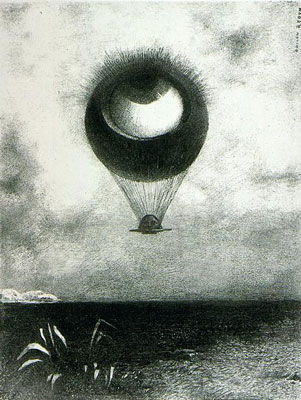
The Eye Like a Strange Balloon Mounts Toward Infinity (1882)
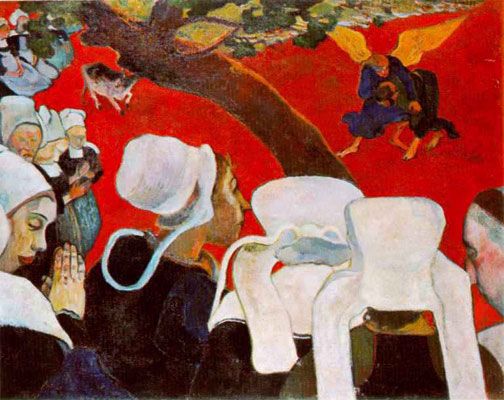
Vision After the Sermon (1888)
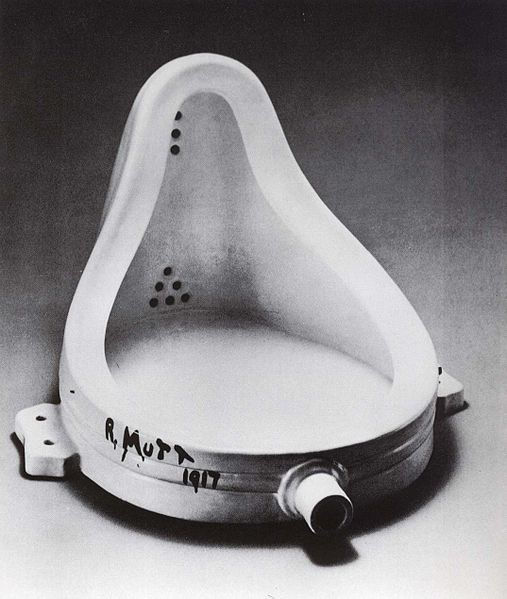
Fountain (1917)

Bidibidobidiboo (1996)
Related artists.

Related Movements & Topics

Content compiled and written by The Art Story Contributors
Edited and published by The Art Story Contributors
Home / Essay Samples / Art / Art Movements
Art Movements Essay Examples
An art movements essay typically analyzes a particular art movement to highlight its philosophy, goals, key characteristics, the time period when it occurred, as well as the most representative artists promoting it. Analyzing the succession of art movements throughout history is equivalent to understanding the evolution of art itself. Hence, learning about the legacy of different art movements is important in educating new artists – as part of their work, they will likely borrow or combine elements from different movements and would tend to create their distinctive style. Essays might also analyze certain masterpieces and argue why they relate to a particular movement in art. The essay’s structure would normally follow the goal – check out the samples below for confirmation.
Music Today is All Noise
In recent times, the landscape of music has undergone a significant transformation. The digital age has brought about unprecedented access to music, allowing artists to reach global audiences with ease. However, this surge in availability has sparked a debate about the quality and essence of...
The Symbolism of Piggy's Glasses
In William Golding's iconic novel, "Lord of the Flies" Piggy's glasses emerge as a powerful symbol that reflects the tension between civilization and savagery. This essay explores the symbolism behind Piggy's glasses, revealing their multifaceted meaning in the narrative and their role in highlighting the...
Medusa's Hair: Exploring Personal Symbols and Religious Experience
Personal symbols have a profound impact on how individuals perceive and interpret their experiences, particularly in the realm of religious and spiritual encounters. This essay delves into the concept of personal symbols, focusing on the significance of Medusa's hair as a symbol and its connection...
Music Today: Noise Versus Art
With the evolution of technology and the advent of digital platforms, the music landscape has undergone significant transformations. As a result, there has been an ongoing debate about the quality and artistic value of modern music. Some critics argue that music today is nothing but...
What is Art for You: a Way to Share Creativity Or Popularize Ideas
What is art for you? Surprisingly, the definition of art which I have read in one essay is somewhat vague and not comprehensive, and I agree with this statement. Also I can define art as “application of skill to production of beauty (esp. visible beauty)...
Michelangelo's Contributions to the Renaissance: Analysis of "La Pieta"
In this essay, I will analyze one of, if not the most famous artwork created by Michelangelo, that being “La Pieta”. This means pity in Italian specifically referencing the feeling of the Virgin Mary for her recently crucified son. 'La Pieta' is undoubtedly one of Michelangelo's...
Why Art is Important: Showing How It Works in Our Lives
Art is often seen as a luxury or a form of entertainment, but in reality, it plays a much more significant role in our lives than we may realize. Art has the power to inspire, to challenge, to comfort, and to transform us in profound...
Literary Techniques and Symbolism in Wilder’s Play 'Our Town'
Our Town is American playwright, Thornton Wilder’s, Pulitzer prize-winning play. It is widely considered an American classic with a simple plot following the everyday lives of the people in a small fictional town set in America – Grover’s Corner, New Hampshire near Massachusetts. This play...
About Langston Hughes Life and 'The Weary Blues' Poem
Langston Hughes was an American poet, novelist, playwright, and social activist who is best known for his contributions to the Harlem Renaissance, a cultural movement that took place in the 1920s and 1930s in Harlem, New York. Here we will reveal more information about Langston...
The Correlation Between Modernism and Automobile Designs
In automobile and modernism essay the focus will be mainly on American modernism, as the evolution of automobile industry initiated there. Thus, the majority of the examples will be intentionally selected to fit both the timeline and the location, alongside the historical and societal events...
Trying to find an excellent essay sample but no results?
Don’t waste your time and get a professional writer to help!
- Italian Renaissance
- Impressionism
- Contemporary Art
- Orientalism
- Postmodernism
- Romantic Era
- Abstract Art
- Visual Arts
samplius.com uses cookies to offer you the best service possible.By continuing we’ll assume you board with our cookie policy .--> -->